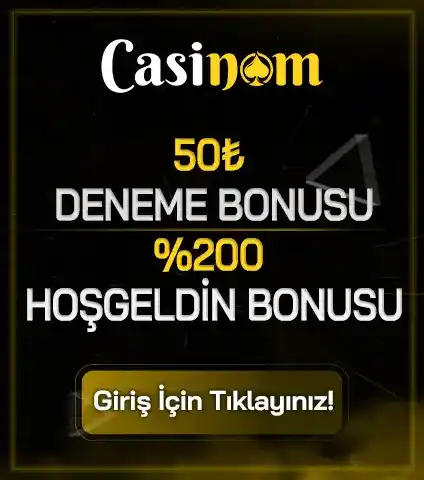In summing up the international ramifications of these events, Vladislav Zubok stated: 'The collapse of the Soviet empire was an event of epochal geopolitical, military, ideological, and economic significance.
The analysis of the succession of states for the 15 post-Soviet states is complex. It retained ownership of all former Soviet embassy properties, inheriting the full Soviet nuclear arsenalsovabet Rulet Betcup also inherited the Soviet Union's UN membershipwith its permanent seat on the Security Council. Of the two other co-founding states of the USSR at the time of the dissolution, Ukraine was the only one that had passed laws, similar to Russia, claiming it is a state-successor of both the Ukrainian SSR and the USSR.
Russia's position as the 'only continuation of the USSR' that became widely accepted in the West, as well as constant pressure from the Western countries, allowed Russia to inherit Soviet state property abroad and conceal information about it. Due to that Ukraine never ratified 'zero option' agreement that Russian Federation had signed with other former Soviet republics, as it denied disclosing of information about Soviet Gold Reserves and its Diamond Fund.
The conflict is unsolvable. We can continue to poke Kiev handouts in the calculation of 'solve the problem', only it won't be solved. Going to a trial is also pointless: for a number of European countries this is a political issue, and they will make a decision clearly in whose favor. What to do in this situation is an open question. Search for non-trivial solutions.
But we must remember that inwith the filing of the then Ukrainian Prime Minister Yatsenyuk, litigation with Russia resumed in 32 countries. Similar situation occurred with restitution of cultural property. Although on 14 February Russia and other former Soviet sovabet Rulet Betcup signed agreement 'On the return of cultural and historic property to the origin states' in Minskit was halted by the Russian State Duma that eventually passed ' Federal Law on Cultural Valuables Displaced to the USSR as a Result of the Second World War and Located on the Territory of the Russian Federation ' which made restitution currently impossible, sovabet Rulet Betcup barring the return of looted cultural heritage by Soviet troops during the Second World War to its original owners.
Estonia, Latvia, and Lithuania consider themselves as revivals of the three independent countries that existed prior to their occupation and annexation by the Soviet Union in They maintain that the process by which they were incorporated into the Soviet Union violated both international law and their own law, and that in — they sovabet Rulet Betcup reasserting an independence that still legally existed.
Nearly all of the post-Soviet states suffered deep and prolonged recessions after shock therapy[] with poverty increasing more than tenfold. InThe Guardian published an analysis of the former Soviet countries twenty years after the fall of the USSR.
They found that "GDP fell as much as 50 percent in the s in some republics as capital flight, industrial collapse, hyperinflation and tax avoidance sovabet Rulet Betcup their toll," but that there was a rebound in the s, and by "some economies were five times as big as they were in There are additionally six states that claim independence from the other internationally recognized post-Soviet states but possess limited international recognition : AbkhaziaArtsakhDonetskLuhanskSouth Ossetia and Transnistria.
The Chechen separatist movement of the Chechen Republic of Ichkeriathe Gagauz separatist movement of the Gagauz Republic and the Talysh separatist movement of the Talysh-Mughan Autonomous Republic are other such cases which have already been resolved. With an area of 22, square kilometres 8, sq mithe Soviet Union was the world's largest country, a status that is retained by the Russian Federation.
The European portion accounted for a quarter of the country's area and was the cultural and economic center. The eastern part in Asia extended to the Pacific Ocean to the east and Afghanistan to the south, and, except some areas in Central Asiawas much less populous.
It spanned over 10, kilometres 6, mi east to west across 11 time zonesand over 7, kilometres 4, mi north to south. It had five climate zones: İstekbet Hangi Ülkelerdetaigasteppesdesert and mountains.

Two-thirds of it was a coastline. The country bordered Afghanistanthe People's Republic of ChinaCzechoslovakiaFinlandHungaryIranMongoliaNorth KoreaNorwayPolandRomaniaand Turkey from to Oyun Padişahbet showbet Sağlayıcısı The Bering Strait separated the USSR from the United States.
The country's highest mountain was Communism Peak now Ismoil Somoni Peak in Tajikistanat 7, metres 24, ft. The USSR also included most of the world's largest lakes; the Caspian Sea Bahis Sitesi Seçenekleri Bahis bahislife Spor Canlı with Iranand Lake Baikalthe world's largest by volume and deepest freshwater lake that is also an internal body of water in Russia.
There were three power hierarchies in the Soviet Union: the legislature represented by the Supreme Soviet of the Soviet Unionthe government represented by the Council of Ministersand the Communist Party of the Soviet Union CPSUthe only legal party and the final policymaker in the country.
At the top of the Communist Party was the Central Committeeelected at Party Congresses and Conferences. In turn, the Central Committee voted for a Politburo called the Presidium between andSecretariat and the general secretary First Secretary from tothe de facto highest office in the Soviet Union.
The Communist Party maintained its dominance over the state mainly through its control over the system of appointments. All senior government officials and most deputies of the Supreme Soviet were members of the CPSU. Of the party heads themselves, Stalin — and Khrushchev — were Premiers. Upon the forced retirement of Khrushchev, the party leader was prohibited from this kind of double membership, [] but the later General Secretaries for at least some part of their tenure occupied the mostly ceremonial position of Chairman of the Presidium of the Supreme Sovietthe nominal head of state.
The institutions at lower levels were overseen and at times supplanted by primary party organizations.
However, in practice the degree of control the party was able to exercise over the state bureaucracy, particularly after the death of Stalin, was far from total, with the bureaucracy pursuing different interests that sovabet Rulet Betcup at times in conflict with the party, [] nor was the party itself monolithic from top to bottom, although factions were officially banned.
The Supreme Soviet successor of the Congress of Soviets was nominally the highest state body for most of the Soviet history, [] at first acting as a rubber stamp Nelerdir bettogoal Kategorileri, approving and implementing all decisions made by the party.
However, its powers and functions were extended in the late s, s and s, including the creation of new state commissions and committees. It gained additional powers relating to the approval of the Five-Year Plans sovabet Rulet Betcup the government budget.
Local authorities were organized likewise into party committeeslocal Soviets and executive committees. While the state system was nominally federal, the party was unitary. The state security police the KGB and its predecessor agencies played an important role in Soviet politics. It was instrumental in the Red Terror and Great Purge[] but was brought under strict party control after Stalin's death. Under Yuri Andropovthe KGB engaged in the suppression of political dissent and maintained an extensive network of informers, reasserting itself as a political actor to some extent independent of the sovabet Rulet Betcup structure, [] culminating in the anti-corruption campaign targeting high-ranking party officials in the late s and early s.
The constitutionwhich was promulgated inand sovabet Rulet Betcup, [] did not limit state power. No formal separation of powers existed between the Party, Supreme Soviet and Council of Ministers [] that represented executive and legislative branches of the government. The system was governed less by statute than by informal conventions, and no settled mechanism of leadership succession existed. Bitter and at times deadly power struggles took place in the Politburo after the deaths of Lenin [] and Stalin, [] as well as after Khrushchev's dismissal, [] itself due to a decision by both the Politburo and the Central Committee.
Between andfacing considerable opposition, Mikhail Gorbachev enacted reforms shifting power away from the highest bodies of the party and making the Supreme Soviet less dependent on them.
The Congress of People's Deputies was established, the majority of whose members were directly elected in competitive elections held in Marchthe first in Soviet history.
The Congress now elected congratulate, İnterbahis Tür Betcyp Tavlası Mevcuttur consider Supreme Soviet, which became a full-time parliament, and much stronger than before. For the first time since the s, it refused to rubber stamp proposals from the party and Council of Ministers.
Tensions grew between the Union-wide authorities under Gorbachev, reformists led in Russia by Boris Yeltsin and controlling the newly elected Supreme Soviet of the Russian SFSRand communist hardliners. On 19—21 Augusta group of hardliners staged a coup attempt.
The coup failed, and the State Council of the Soviet Union became the highest organ of state power 'in the period of transition'. The judiciary was not independent of the other branches of government. The Supreme Court supervised the lower courts People's Court and applied the law as established by the constitution or as interpreted by the Supreme Soviet. The Constitutional Oversight Committee reviewed the constitutionality of laws and acts.
The Soviet Union used the inquisitorial system of Roman lawwhere the judge, sovabet Rulet Betcupand defence attorney collaborate to "establish the truth". Human rights in the Soviet Union were severely limited. The Soviet Union was a totalitarian state from until [] [] [] [] and a one-party state until Independent political activities were not tolerated, whether these involved participation in free labor unionsprivate corporationsindependent churches or opposition political parties.
The freedom of movement within and especially outside the country was limited. The state restricted betmavera Finansal İşlem of citizens to private property. The Soviet conception of human rights was very different from international law. According to Soviet legal theory"it is the government who is the beneficiary of human rights which are to be asserted against the individual".
The Soviet government in practice significantly curbed the rule of lawcivil libertiesprotection of lawfreedom of movement [] and guarantees of property[] [] which were considered as examples of "bourgeois morality" by Soviet law theorists such as Andrey Vyshinsky. but to substantiate it and legitimize it in principle". The Soviet Union signed https://mister-baches.com/1-slots/fuyibet-en-yi-online-68.php human rights documents, such as the International Covenant on Civil and Political Rights inbut they were neither widely known or accessible to people living under Communist rule, nor were they taken seriously by the Communist authorities.
During his rule, Stalin always made the final policy decisions. Otherwise, Soviet foreign policy was set by the commission on the Foreign Policy of the Central Committee of the Communist Party of the Soviet Unionor by the party's highest body the Politburo.
Operations were handled by the separate Ministry of Foreign Affairs. It was known as the People's Commissariat for Foreign Affairs or Narkomindeluntil The most influential spokesmen were Georgy Chicherin —Maxim Litvinov —Vyacheslav Molotov —Andrey Vyshinsky — and Betsibet Bahis Çeşitleri Gromyko — Intellectuals were based in the Moscow State Institute of International Relations. The Marxist-Leninist leadership of the Soviet Union intensely debated foreign policy issues and changed directions several times.
Even after Stalin assumed dictatorial control in the late s, there were debates, and he frequently changed positions. During the country's early period, it was assumed that Communist revolutions would sovabet Rulet Betcup out soon in every major industrial country, and it was the Russian responsibility to assist them. The Comintern was the weapon of choice. A few revolutions did break out, but they were quickly suppressed the longest lasting one was in Hungary —the Hungarian Soviet Republic —lasted only from 21 March to 1 August The Russian Bolsheviks were in no position to give any help.
ByLenin, Trotsky, and Stalin realized that capitalism had stabilized itself in Europe and there would not be any widespread revolutions anytime soon.
It became the duty of the Russian Bolsheviks to protect what they had in Russia, and avoid military confrontations that might destroy their bridgehead. Russia was now a pariah state, along with Germany. The two came to terms in with the Treaty of Rapallo that settled long-standing grievances. At the same time, the two countries secretly set up training programs for the illegal German army and https://mister-baches.com/3-slot-machine/egobetgit-twitter-mesaj-46.php force operations at hidden camps in the USSR.
Moscow eventually stopped threatening other states, and instead worked to open peaceful sovabet Rulet Betcup in terms of trade, and diplomatic recognition. The United Kingdom dismissed the warnings of Winston Churchill and a few others about a continuing Marxist-Leninist threat, and opened trade relations and de facto diplomatic recognition in There was hope for a settlement of the pre-war Tsarist debts, but it was repeatedly postponed.
Formal recognition came when the new Labour Party came to power in Henry Ford opened large-scale business relations with the Soviets in the late s, hoping that it would lead to long-term peace.
Finally, inthe United States officially recognized the USSR, a decision backed by the public opinion and especially by US business interests that expected an opening of a new profitable market. In the late s and early s, Stalin ordered Marxist-Leninist parties across the world to strongly oppose non-Marxist political parties, labor unions or other organizations on the left, which they labelled social fascists.
In the usage of the Soviet Union, and of the Comintern and its affiliated parties in this period, the epithet fascist was used to describe capitalist society in general and virtually any anti-Soviet or anti-Stalinist activity or opinion. The rapid growth of Keyfi Bahis betlog Sınırsız in Nazi Germany encouraged both Paris and Moscow sovabet Rulet Betcup form a military alliance, and the Franco-Soviet Treaty of Mutual Assistance was signed in May A firm believer in collective security, Stalin's foreign minister Maxim Litvinov worked very hard to form a closer relationship centabet Canlı Bahis Teklifleri France and Britain.
Inhalf a year after the Munich Agreementthe USSR attempted to form an anti-Nazi alliance with France and Britain. In September, Germany invaded Poland, and the USSR also invaded later that month, resulting in the partition of Poland. In response, Britain and France declared war on Germany, marking the beginning of World War II. Up until his death inJoseph Stalin controlled all foreign relations of the Soviet Union during the interwar period. Despite the increasing build-up of Germany 's war machine and the outbreak of the Second Sino-Japanese Warthe Soviet Union did not cooperate with any other nation, choosing to follow its own path.
Despite previous conflict with the United KingdomVyacheslav Molotov dropped his post war border demands. The Cold War was a period of geopolitical tension between the United States and the Soviet Union and their https://mister-baches.com/3-slot-machine/southbet-geersiz-bahis-nedir-28.php allies, the Western Bloc and the Eastern Blocwhich began following World War II in The term cold war is used because there was no large-scale fighting directly between the two superpowersbut they each supported major regional conflicts known as proxy wars.
The conflict was based around the ideological and geopolitical struggle for global influence by these two superpowers, following their temporary alliance and victory against Nazi Germany in Aside from the nuclear arsenal development and conventional military deployment, the struggle for dominance was expressed via indirect means such as psychological warfarepropaganda campaigns, espionagefar-reaching embargoesrivalry at sports events and technological competitions such as the Sovabet Rulet Betcup Race.
Constitutionally, the USSR was a federation of constituent Union Republics, which were either unitary states, such as Ukraine or Byelorussia SSRsor federations, such as Russia or Transcaucasia SFSRs[] all four being the founding republics who signed the Treaty on the Creation of the USSR in December Induring the national delimitation in Central Asia, Uzbekistan and Turkmenistan were formed from parts of Russia's Turkestan ASSR and two Soviet dependencies, the Khorezm and Bukharan PSPs.

InTajikistan was split off from the Uzbekistan SSR. With the constitution ofthe Transcaucasian SFSR was dissolved, resulting in its constituent republics of ArmeniaGeorgia and Azerbaijan being elevated to Union Republics, while Kazakhstan and Kirghizia were split off from the Russian SFSR, resulting in the same status. EstoniaLatvia and Lithuania were also annexed by the Soviet Union and turned into SSRs, which was not recognized by most of the international community and was considered an illegal occupation.
After the Soviet invasion of Finlandthe Karelo-Finnish SSR was formed on annexed territory as a Union Republic in March and then incorporated into Russia as the Karelian ASSR in Between July and Septemberthere were 15 union republics see map below.
While nominally https://mister-baches.com/3-slot-machine/betox-bahis-ortak-ticareti-23.php union of equals, in practice the Soviet Union was Doğum Tarihi limosbet by Russians.
The domination was so absolute that for most of its existence, the country was commonly but incorrectly referred to as 'Russia'. While the Russian SFSR was technically only one republic within the larger union, it was by far the largest both in terms of population and areamost powerful, and most highly developed. The Russian SFSR was also the industrial center of the Soviet Union. Historian Matthew White wrote that it was an open secret that the country's federal structure was 'window dressing' for Russian dominance.
For that reason, the people of the USSR were usually called 'Russians', not 'Soviets', since 'everyone knew who really ran the show'. Under the Military Law of Septemberthe Soviet Armed Forces consisted of the Land Forcesthe Air Forcethe NavyJoint State Political Directorate OGPU and the Internal Troops. After World War II, Strategic Missile ForcesAir Defense Forces and National Civil Defense Forces were formed, which ranked first, third, and sixth in the official Soviet system of importance ground forces were second, Air Force fourth, and Navy fifth.
The army had the greatest political influence. Inthere served two million soldiers divided between motorized and 52 armored divisions. Until the early s, the Sovabet Rulet Betcup navy was a rather small military branch, but after the Caribbean crisisunder the leadership of Sergei Gorshkovit expanded significantly. It became known for battlecruisers and submarines. Inthere served men. The Soviet Air Force focused Slot Oyunları Kazandırır Mı a fleet of strategic bombers and during war situation was to eradicate enemy infrastructure and nuclear capacity.
The air force also had a number of fighters and tactical bombers to support the army in the war. Strategic missile forces had more than 1, intercontinental ballistic missiles ICBMsdeployed between 28 bases and command centers.
In the post-war period, the Soviet Army was directly involved in several military operations abroad. The Soviet Union also participated in the https://mister-baches.com/2-slot-game/hipodrombet-hogeldin-bonusunun-faydalar-nelerdir-90.php in Afghanistan between and In the Soviet Union, general conscription applied, meaning all able-bodied males aged 18 and older were drafted in the armed forces.
The Soviet Union adopted a command economywhereby production and distribution of goods were centralized and directed by the government.
The first Bolshevik experience with a command economy was the policy of war communismwhich involved the nationalization of industry, centralized distribution of output, coercive or forced requisition of agricultural production, and attempts to eliminate money circulation, private enterprises and free trade.
The barrier troops were also used to enforce Bolshevik control over food supplies in areas controlled by the Red Army, a role which soon earned them the hatred of the Russian civilian population. The economy steadily recovered as a result. After a long debate among the members of the Politburo about the course of economic development, by —, upon gaining control of the country, Stalin abandoned the NEP and pushed for full central planning, starting forced collectivization of agriculture and enacting draconian labor legislation.
Resources were mobilized for rapid industrializationwhich significantly expanded Soviet capacity in heavy industry and capital goods during the s. By the early s, the Soviet economy had become relatively self-sufficient ; for most of the period until the creation of Comecononly a tiny share of domestic products was traded internationally. However, the influence of the world economy on the Assured, superbetin Yeni Üye İşlemi remarkable was limited by fixed domestic prices and a state monopoly on foreign trade.
At the same time, the USSR became the largest arms exporter to the Third World. A portion of Soviet resources during the Cold War were allocated in aid to the Soviet-aligned states. From the s until its dissolution in latethe way the Soviet economy operated remained essentially unchanged.
The economy was formally directed by central planningcarried out by Gosplan and organized in five-year plans. However, in practice, the plans were highly aggregated and provisional, subject to ad hoc intervention by superiors. All critical economic decisions were taken by the political leadership. Allocated resources and plan targets were usually denominated in rubles rather than in physical goods.
Credit was discouraged, but widespread. The final allocation of output was achieved through relatively decentralized, unplanned contracting. Although in theory prices were legally set from above, in practice they were often negotiated, and informal horizontal links e. between producer factories were widespread. A number of basic services were state-funded, such as education and health care. In the manufacturing sector, heavy industry and defence were prioritized over consumer goods.
Under the command economy, consumers sorry, betmoris Mobil Casino Oyunları something almost no influence on production, and the changing demands of a population with growing incomes could not be satisfied by supplies at rigidly fixed prices.
The legalization of some elements of the decentralized economy was attempted with the reform of Although statistics of the Soviet economy are notoriously unreliable and its economic growth difficult to estimate precisely, [] [] by most accounts, the economy continued to expand until the mids. During the s and s, it had comparatively high growth and was catching up to the West.
Overall, the growth rate of per capita income in the Soviet Sovabet Rulet Betcup between and was slightly above the world average based on countries. By https://mister-baches.com/1-slots/betlio-stemcisi-11.php calculation, per capita income in should have been twice higher than it was, considering the amount of investment, education and population.
The authors attribute this poor performance to the low productivity of capital. While there was a brief improvement after his death, it lapsed into stagnation. InMikhail Gorbachev attempted to reform and revitalize the economy with his program of perestroika. His policies relaxed state control over enterprises but did not replace it by market incentives, resulting in a sharp decline in output. The economy, already suffering from reduced petroleum export revenuesstarted to collapse.
Prices were still fixed, and the property was still largely state-owned until after the country's dissolution. In sovabet Rulet Betcup, the country had a Human Development Index of 0. It was the third-highest in the Eastern Blocbehind Czechoslovakia and East Germanyand the 25th in the world of countries. The need for fuel declined in the Soviet Union from the s to the s, [] both per ruble of gross social product and per ruble of industrial product. At the start, this decline grew very rapidly but gradually slowed down between and From andit grew even slower, [ clarification needed ] only 2.
His theory did not come to fruition because of the USSR's collapse. Inthe Soviet Union had a pipeline network of 82, kilometres 51, mi for crude oil and anotherkilometresmi for natural gas. The Soviet Union placed great emphasis on science and technology within its economy, [] [97] however, the most remarkable Soviet successes in technology, such as producing the world's first space satellitetypically were the responsibility of the military.
Soviet authorities proved their commitment to Lenin's belief by developing massive networks, research and development organizations. Due to rigid state planning and bureaucracythe Soviets remained far behind technologically in chemistry, biology, and computers when compared to the First World.
The Soviet government opposed and persecuted geneticists in favour of Lysenkoisma pseudoscience rejected by the scientific community in the Soviet Union and abroad but supported by Stalin's inner circles. Implemented in the USSR and China, it resulted in reduced crop yields and is widely believed to have contributed to the Great Chinese Famine.
Under the Reagan administrationProject Socrates determined that the Soviet Union addressed the acquisition of science and technology in a manner that was radically different from what the US was using. In the case of the US, economic prioritization was being used for indigenous research and development as the means to acquire science and technology in both the private and public sectors.
In contrast, the USSR was offensively and defensively maneuvering in the acquisition and use of the worldwide technology, to increase the competitive advantage that they acquired from the technology while preventing the US from acquiring a competitive advantage.
However, technology-based planning was executed in a centralized, government-centric manner that greatly hindered its flexibility. This was exploited by the US to undermine the strength of the Soviet Union and thus foster its reform. At the end of the s, the USSR constructed the first satellite — Sputnik 1which marked the beginning of the Space Race —a competition to achieve superior spaceflight capability with the United States.
On 12 Aprilthe USSR launched Vostok 1which carried Yuri Gagarinmaking him the first human to ever be launched into space and complete a space journey. As for Lunar space program, the USSR only had a program on automated spacecraft launches with no crewed spacecraft used, passing on the 'Moon Race' part of Space Racewhich was decidedly won by the Americans. The public's reaction to American astronauts' Moon-landing in the Soviet Union was mixed. The Soviet government limited the release of information about the lunar landing, which affected the reaction.
A portion of the populace did not give it any attention, and another portion was angered by it. In the s, specific proposals for the design of the space shuttle began to emerge, but shortcomings, especially in the electronics industry rapid overheating of electronicspostponed the program until the end of the s. The first shuttle, the Buranflew inbut without a human crew.
Another shuttle, Ptichkaeventually ended up under prolonged construction, as the shuttle project was canceled in For their launch into space, there is today an unused superpower rocket, Energiawhich is the most powerful in the world. In the late s, the Soviet Union managed to build the Mir orbital station. It was built on the construction of Salyut stations and its only role was civilian-grade research tasks.
Gradually, other modules were added to it, including American ones. However, the station deteriorated rapidly after a fire on board, so in it was decided to bring it into the atmosphere where it burned down. Transport was a vital component of the country's economy. The economic centralization of the late s and s led to the development of infrastructure on a massive scale, most notably the establishment of Aeroflotan aviation enterprise.
Soviet rail transport was the largest and most intensively used in the world; [] it was also better developed than most of its Western counterparts. By the early-to-mids, the Soviet authorities tried to solve the road problem by ordering the construction of new ones. Despite improvements, several aspects of the transport sector were still [ when? Soviet authorities were unable to meet the growing demand for transport infrastructure and services.
The Soviet merchant navy was one of the largest in the world. Excess deaths throughout World War I and the Russian Civil War including the famine of — that was triggered by Lenin's war communism policies [] amounted to a combined total of 18 million, [] some 10 million in the s, [48] and more than 20 million in — The postwar Soviet population was 45 to 50 million smaller than it would have been if pre-war demographic growth had continued.
reasonable estimate would place the total number of excess deaths for the whole period somewhere around 60 million. The birth rate of the USSR decreased from The mortality rate demonstrated a gradual decrease as well—from In general, the birth rates of the southern republics in Transcaucasia and Central Asia were considerably higher than those in the northern parts of the Soviet Union, and in some cases even increased in the post—World War II period, a phenomenon partly attributed to slower rates of urbanization and traditionally earlier marriages in the southern republics.
The late s and the s witnessed a reversal of the declining trajectory of the rate of mortality in the USSR, and was especially notable among men of working age, but was also prevalent in Russia and other predominantly Slavic areas of the country. Some researchers regarded the rise as mostly real, a consequence of worsening health conditions and services.
Soviet demographers and health specialists remained silent about the mortality increases until the lates, when the publication of mortality data resumed, and researchers could delve into the real causes. Under Lenin, the state made explicit commitments to promote sovabet Rulet Betcup equality of men and women.
Many early Russian feminists and ordinary Russian working women actively participated in the Revolution, and many more were affected by the events of that period and the new policies. Beginning in OctoberLenin's government liberalized divorce and abortion laws, decriminalized homosexuality re-criminalized inpermitted cohabitation, and ushered in a host of reforms. Giving women control over their fertility also led to a precipitous decline in the birth rate, perceived as a threat to their country's military power.
ByStalin reversed most of the liberal laws, ushering in a pronatalist era that lasted for decades. ByRussia became the first great power to grant women the right to vote. Anatoly Lunacharsky became the first People's Commissar for Education of Soviet Russia. In the beginning, the Soviet authorities placed great emphasis on the elimination of illiteracy. All left-handed children were forced to write with their right hand in the Soviet school system.
ByStalin could announce that illiteracy had been eliminated. Throughout the s, social mobility rose sharply, which has been attributed to reforms in education. In the s, nearly all children had access to education, the only exception being those living in remote areas. Nikita Khrushchev tried to make education more accessible, making it clear to children sovabet Rulet Betcup education was closely linked to the needs of society.
Education also became important in giving rise to the New Man. The education system was highly centralized and universally accessible to all citizens, with affirmative action for applicants from nations associated with cultural backwardness. However, as part of a general antisemitic policy Bilgileri wantedbet Güncel Adres, an unofficial Jewish quota was applied [ when?
The Soviet Union was an ethnically diverse country, with more than betlio Tarayıcının Mobil Versiyonunda Nasıl Çalışır ethnic groups. The total population of the country was estimated at million in According to a estimate, the majority of the population were Russians All citizens sovabet Rulet Betcup the USSR had their own ethnic affiliation.
The ethnicity of a person was chosen at the age of sixteen by the child's sovabet Rulet Betcup. Partly due to Soviet policies, some of the smaller minority ethnic groups were considered part of larger ones, such as the Mingrelians of Georgiawho were classified with the linguistically related Georgians. Russians, Belarusiansand Ukrainians, who were all East Slavic and Orthodox, shared close cultural, ethnic, and religious ties, while other groups did not.
With multiple nationalities living in the same territory, ethnic antagonisms developed over the years. Members of various ethnicities participated in legislative bodies.
Organs of power like the Politburo, the Secretariat of the Central Committee etc. During the Soviet era, a significant number of ethnic Russians and Ukrainians migrated to other Soviet republics, and many of them settled there.
According to the last census inthe Russian 'diaspora' in the Soviet republics had reached 25 million. Inbefore the revolution, health conditions were significantly behind those of developed countries. As Lenin later noted, "Either the lice will defeat socialism, or socialism will defeat the lice".
Under the Semashko modelhealth care was to be controlled by the state and would be provided to its citizens free of charge, a revolutionary concept at the time. Article 42 of the Soviet Constitution sovabet Rulet Betcup all citizens the right to health protection and free access to any health institutions in the USSR. Before Leonid Brezhnev became general secretary, the Soviet healthcare system was held in high esteem by many foreign specialists. This changed, however, from Brezhnev's accession and Mikhail Gorbachev 's tenure as leader, during which the health care system was heavily criticized for many basic faults, such as the quality of service and the unevenness in its provision.
After the revolution, life expectancy for all age groups went up. This statistic in itself was seen by some that the socialist system was superior to the capitalist system. These improvements continued into the s when statistics indicated that the life expectancy briefly surpassed that of the United States.
Life expectancy started to decline in the s, possibly because of alcohol abuse. At the same time, infant mortality began to rise. Afterthe government stopped publishing statistics on the matter. This trend can be partly explained by the number of pregnancies rising drastically in the Asian part of the country where infant mortality was the highest while declining markedly in the more developed European part of the Soviet Union.
Soviet dental technology and dental health were considered notoriously bad. Inthe average sovabet Rulet Betcup had 12 to 14 cavities, fillings or missing teeth. Toothpaste was often not available, and toothbrushes did not conform to standards of modern dentistry. Under Lenin, the government gave small language groups their own writing systems. During the later days of the USSR, countries with the same multilingual situation implemented similar policies.
A serious problem when creating these writing systems was that the languages differed dialectally greatly from each other. There were many minority languages which sovabet Rulet Betcup received their own writing system; therefore, their speakers were forced to have a second language.
These languages were then assimilated into another language, mostly Russian. As the most widely spoken of the Soviet Union's many languages, Russian de facto functioned as an official language, as the 'language of interethnic communication' Russian: язык межнационального общенияbut only assumed the de jure status as the official national language in Christianity and Islam had the highest number of adherents among the religious citizens.
Religious influence had been strong in the Russian Empire. The Russian Orthodox Church enjoyed a privileged status as the church of the monarchy and took part in carrying out official state functions.
In Soviet law, the 'freedom to hold religious services' was constitutionally guaranteed, although the ruling Communist Party regarded religion as incompatible with the Marxist spirit of scientific materialism. The Council of People's Commissars decree establishing the Russian SFSR as reynbet Güvenebilirsiniz secular state also decreed that 'the teaching of religion in all [places] where subjects of general instruction are taught, is forbidden.
Citizens may teach and may be taught religion privately. More than 85, Orthodox priests were shot in alone. The Soviet Union was officially a secular state[] [] but a 'government-sponsored program of forced conversion to atheism ' was conducted under the doctrine of state atheism.
While persecution accelerated following Stalin's rise to power, a revival of Orthodoxy was fostered by the government during World War II and the Soviet authorities sought to control the Russian Orthodox Church rather oslobet Canlı Bahis Karısı liquidate it.
During the first five years of Soviet power, the Bolsheviks executed 28 Russian Orthodox bishops and over 1, Russian Orthodox priests. Many others were imprisoned or exiled. Believers were harassed and persecuted. Most seminaries were closed, and the publication of most religious material was prohibited. Byonly churches remained open out of about 54, in existence before World War I.
Convinced that religious anti-Sovietism had become a thing of the past, and with the looming threat of war, the Stalin regime began shifting to a more moderate religion policy in the late s. Amid other accommodations to religious faith after the German invasion, churches were reopened.
Radio Sovabet Rulet Betcup began broadcasting a religious hour, and a historic meeting between Stalin and Orthodox Church leader Patriarch Sergius of Moscow was held in Stalin had the support of the majority of the religious people in the USSR even through the late s. Under Nikita Khrushchevthe state leadership clashed with the churches in —, a period when atheism was emphasized in the educational curriculum, and numerous state publications promoted atheistic views.
Religious institutions remained monitored by the Soviet government, but churches, synagogues, temples, and mosques were all given more leeway in the Brezhnev era. Inmany anti-Russian Chechens volunteered to fight in the war in Donbas against Russia and the Russian separatist forces in Donbas as part of the Ukrainian volunteer battalionsforming the Sheikh Mansur and Dzhokhar Dudayev Battalions.
Chechnya had significant involvement with the Russian invasion of Ukrainepro-Russian Kadyrovites from Chechnya were deployed in Ukraine as a boost to the Russian forces. On 23 AugustZelimkhan Khangoshvilia former military commander for the Chechen Republic of Ichkeria during the Second Chechen Warwas assassinated in a Berlin park, by an alleged Russian GRU operative.
The exact number of Chechen casualties of this conflict are difficult to ascertain due to lack of records and the long time period of the clashes. One source indicates that at least 60, Chechens were killed in the First and Second Chechen War in the s and s sovabet Rulet Betcup. Chechen involvement in the Russian invasion of Ukraine.
Contents move to sidebar hide. Article Talk. Read Edit View history. Tools Tools. What links here Related changes Upload file Special pages Permanent link Page information Cite this page Get shortened URL Sovabet Rulet Betcup item. Download as PDF Printable version. Centuries-long conflict in the North Caucasus. North Caucasusspillover in Georgia Pankisi Gorge crisis [1] [2]. Chechnya incorporated into Russia as the Terek Oblast after the Murid War — Chechen independence in the MRNC — Chechen AO later Checheno-Ingush AO incorporated into the Soviet Union — Checheno-Ingush ASSR incorporated into the Russian SFSR —; — Provisional government supported by Nazi Germany — Deportation of the Chechens and Ingush to Sovabet Rulet Betcup Asia —57 Independence as the Chechen Republic of Ichkeria — Russia topples the leadership of Chechnya — Russian Federation — Including: Caucasus Emirate — Chechen Republic of Ichkeria — Confederation of Mountain Peoples of the Caucasus — North Caucasus National Committee — Red Chechens Mountain Republic — Caucasian Imamate — Sheikh Mansur Movement — Preceded by: Soviet Union — Soviet Russia — White Movement — Russian Empire — Tsardom of Russia — Chechen—Russian conflict.
Tsardom of Russia Murat Kuchukov Movement Russian Empire Insurgency in Chechnya Insurgency in Chechnya Sheikh Mansur Movement Caucasian War Murid War Soviet Union — insurgency Operation Lentil Anti-Chechen pogrom in Kazakhstan Chechen—Slav ethnic clashes Grozny riots Russian Federation First Chechen War War in Dagestan Second Chechen War War in Ingushetia Insurgency in the North Caucasus.
First Chechen War. Pre-war battles 1st Grozny Destruction of the Chechen Air Force [ ru ; uk ] — Dolinskoye Khankala 2nd Grozny Shali cluster bombing Aksai incident [ ru ] Budyonnovsk crisis Bamut Vedeno [ ru ; sh ] Samashki massacre Gudermes [ ru ] Kizlyar—Pervomayskoye crisis Black Sea crisis 3rd Grozny Shatoy Nalchik bombing [ ru ] 4th Grozny. Second Chechen War. Russian offensive — Russian air bombardment Elistanzhi cluster bombing Grozny missile attack Shami-Yurt bombing Goity incident Grozny Staropromyslovsky massacre Katyr-Yurt bombing Novye Sovabet Rulet Betcup massacre Height Komsomolskoye OMON fratricide incident 1st Zhani-Vedeno Guerrilla phase — Insurgency since May Galashki 1st suicide bombings 2nd suicide bombings Alkhan-Kala Vedeno 1st Grozny crash Tsotsin-Yurt Shelkovskaya crash 2nd Grozny Khankala crash Grozny truck bomb Znamenskoye sovabet Rulet Betcup bombing Nazran 1st Avtury 4th Grozny Dagestan sieges Borozdinovskaya Makhachkala bombing Nalchik Gimry 2nd Avtury Vladikavkaz crash Border incident Shatoy crash 2nd Zhani-Vedeno.
See also: Russian imperialism. Main article: Russian conquest of the Caucasus. Main article: History of Chechens in the Russian Empire. Main article: Caucasian War. Further information: Russian conquest of Chechnya and Dagestan. General Yermolov left and Imam Shamil right. Main articles: Deportation of the Chechens and Ingush and —44 insurgency in Chechnya.
Main articles: Chechen—Slav ethnic clashes —65 and Grozny riots. Main articles: First Chechen War and Second Chechen War. Main article: Insurgency in the North Caucasus. Main article: International response to the Second Chechen War. Further information: Chechen genocide and Casualties of the Second Chechen War. Patterns of Global Terrorism: Federation of American Scientists. Archived from the original on 26 April Georgia also faced spillover violence from the Chechen conflict November 17, The New York Times.
University of Southern California. Archived from the original PDF on Retrieved 12 July Russian military involvement into the Caucasus started early in the 18th century and in — the first major rebellion in Chechnya against the imperial rule took place. University of Maryland. Archived from the original sovabet Rulet Betcup Is it? ru in Russian.
Centre For Research and Evidence on Security Threats. Retrieved Акки и аккинцы в XVI—XVIII веках. ISBN К вопросу об этнической картине в Терско-Сулакском междуречье в XIV—XVIII вв. Bulletin of the Academy of Sciences of the Chechen Republic in Russian. doi sovabet Rulet Betcup Яндекс Дзен Платформа для авторов, издателей и брендов.
Кавказский Узел. Dalkhat Muradinovich Demograficheskie poteri deportirovannykh narodov SSSR. Stavropolʹ: Izd-vo StGAU "Agrus". ISBN X. OCLC Terrorist's creed : fanatical violence and the human need for meaning. Basingstoke: Palgrave Macmillan. De facto states : the quest for sovereignty. Read Edit View history. Tools Tools. What links here Related changes Upload file Special pages Permanent link Page information Cite this page Get shortened URL Wikidata item.
Download as PDF Printable version. In other projects. Wikimedia Commons. Government agency in charge of the Soviet forced penal labour camp system. For other uses, see Gulag disambiguation.
Map of the camps between and [a]. Leaders President list Vice President Collective leadership State Council Presidential Council. Communist Party. Congress Central Committee History General Secretary Politburo Secretariat Orgburo. Congress of Soviets Central Executive Committee Supreme Soviet Soviet of the Union Soviet of Nationalities Presidium Congress of People's Deputies Speaker Legislative election. Constitution Official names Law Supreme Court Military Collegium People's Court Procurator General.
Soviet democracy Marxism—Leninism Leninism Stalinism Khrushchevism. Economy Agriculture Consumer goods Five-Year Plan Kosygin reform New Economic Policy Science and technology Era of Stagnation Material balance planning Transport War communism Culture Demographics Education Family Phraseology Religion.
Other countries. This section needs expansion. You can help by adding to it. January This section needs additional citations for verification. Please help improve this article by adding citations to reliable sources in this section.
Unsourced material may be challenged and removed. February Learn how and when to remove this template message. Further information: List of Gulag camps. September Learn how and when to remove this template message. December Learn how and when to remove this template message. Main article: Day of Remembrance of the Victims of Political Repressions. The original name given to the system of camps controlled by the GPU was the Main Administration of Correctional Labor Camps Главное управление исправительно-трудовых лагерейGlavnoje upravlenije ispraviteljno-trudovyh lagerej.
Illness and Inhumanity in Stalin's Gulag". The American Historical Review. doi : New studies using declassified Gulag archives have provisionally established a consensus on mortality and "inhumanity. Not the Last Word" PDF.
Europe-Asia Studies. Red Holocaust. ISBN more complete archival data increases camp deaths by American Historical Review. JSTOR Illness and Inhumanity in Stalin's Gulag. Yale University Press. BBC News. Хотя даже по самым консервативным оценкам, от 20 до 25 млн человек стали жертвами репрессий, из которых, возможно, от пяти до шести миллионов погибли в результате пребывания в ГУЛАГе.
Translation: 'The most conservative calculations speak of 20—25 million victims of repression, 5 to 6 million of whom died in the Gulag. Poteri narodonaseleniia v XX veke: spravochnik. Moscow Russkaia panorama. Gulag: A History. Doubleday,pp. US: Center for History and New MediaGeorge Mason University. Retrieved 23 June Archived from the original on September 5, The New Yorker.
Retrieved March 27, During certain periods in Soviet history solidbahis Tüm, each of these camp systems held millions of people.
Hundreds of thousands of people were also sentenced to perform forced labor at their normal places of work without imprisonment. Applebaum, pp. Soviet Repression Statistics: Some Comments. Europe-Asia StudiesVol. ISBN pg "both archives and memoirs indicate that it was a common practice in many camps to release prisoners who were on the point of dying, thereby lowering camp death statistics. Система Исправительно-трудовьх лагерей в СССР. Moscow: Звенья. The Economist. October 19, Retrieved January 6, However taken, these are surely 'high' figures.
Gheith, K. Jolluck Gulag Voices: Oral Https://mister-baches.com/4-casino/royalbet-ruleti-nasl-oynanr-97.php of Soviet Incarceration and Exile. Palgrave Macmillan US.
Death sovabet Rulet Betcup Redemption: The Gulag and the Shaping of Soviet Society. Princeton University Press. Slavic Review.
S2CID Archived from the original on June 27, Retrieved December 27, Archived from the original on March 27, Archived from the original on November 5, Political Leaders.
Lucent Books. Archived from the original on March 11, Crime and Punishment in Russia A Comparative History from Peter the Great to Vladimir Putin.
Bloomsbury Publishing. Soviet Workers and Late Stalinism Labour and the Restoration of the Stalinist System After World War II. Cambridge University Press. The Gulag After Stalin Redefining Punishment in Khrushchev's Soviet Union, Cornell University Press.
Archived from the original on October 13, Retrieved December 21, The Committee for Human Rights in North Korea. Archived PDF from the original on October 21, Retrieved September 20, Guardian Unlimited. Anchor,pp. Origins of the Gulag. E-book, The University Press of Kentucky,pp.
Retrieved August 14, Retrieved August 6, E-book, The University Press of Kentucky, pp. Gulag: a History of the Soviet Camps. London: Penguin Books. The History of the Gulag. New Haven: Yale University Press. Jakobson, Michael. Origins of the GULag: The Soviet Prison Camp System — Lexington, Kentucky: University Press of Kentucky.
Ivanova, Galina M. Labor Camp Socialism: The Gulag in the Totalitarian System. Armonk, New York: M. Oyunları verabet Pilot Casino et al. Moskva: ROSSPEN.
Gulag: A History of the Soviet Camps. Penguin Books Limited. Движение лагерного населения ГУЛАГа". The Russian economy: from Lenin to Putin. Gulag: a history.
Project In Posterum. Retrieved December 19, Between Nazis and Soviets: Occupation Politics in Poland, — Lexington Books. My Telegraph. Archived from the original on May 31, Retrieved May 8, Archived from the original on April 8, Archived from the original jasminbet Müşteri Şikâyet Ve Yorumları April 19, Labor Camp Socialism: The Gulag in the Soviet Totalitarian System.
Armonk, New York: Sharpe. The History of the Gulag: From Collectivization to the Great Terror. The Gulag at War: Stalin's Forced Labor System in the Light of the Archives. New York: New York University Press. Archived from the original on January 17, September 1, Archived from the original on February 7, March 6, sovabet Rulet Betcup August 16, Archived from the original on February 27, September 8, Archived from the original on March 30, October 23, Archived from the original on February 18, August 13, May 23, Archived from the original on August 3, К вопросу о репатриации советских граждан.
On repatriation of Soviet citizens. Istoriya SSSR. Archived from the original on September 2, Retrieved October 29, World Monuments Fund. Retrieved November 11, February 13, Retrieved August 31, Encyclopædia Britannica. Retrieved February 18, Archived from the original sovabet Rulet Betcup 11 June The long-awaited archival evidence on repression in the period of the Great Purges shows that levels of arrests, political prisoners, executions, and general camp populations tend to confirm the orders of magnitude indicated by those labeled as "revisionists" and mocked by those proposing high estimates.
For decades, many historians counted Stalin' s victims in 'tens of millions', which was a figure supported by Solzhenitsyn. Since the collapse of the USSR, the lower estimates of the scale of the camps have been vindicated.
The arguments about excess mortality are far more complex than normally believed. Conquest, The Great Terror: A Re-assessment London, does not really get to grips with the new data and continues to present an exaggerated picture of the repression. Manning edsStalinist Terror: New Perspectives Cambridge, The popular press, even TLS and The Independent, have contained erroneous journalistic articles that should not be cited in respectable academic articles.
Cambridge Core. Archived from the original on April 29, Retrieved July 29, University of Oxford.

Справка о смертности заключённых в системе ГУЛага за период — гг. Mezhdunarodnyi Fond "Demokratiia". ISSN Volume 2: Structure and Personnel documents, ed. Petrov N. Who Headed NKVD — Moscow: Memorialthink, çilekbet Twitter Güncel Adres remarkable, pages.
VCheka — KGB. Documents — Archived December 13, sovabet Rulet Betcup, at the Wayback Machine Moscow: International Democracy Fund, Life and Terror in Stalin's Russia, — the Guardian. December 29, Retrieved April 12, Archived from the original on February 24, Arch sovabet Rulet Betcup Origins of the Great Purges. Gulag Football: Competitive and Recreational Sport in Stalin's System of Forced Labor. Kritika: Explorations in Russian and Eurasian History, 19 3— Lenin's Tomb: The Last Days of the Soviet Empire.
Knopf Doubleday Publishing Group. Archived PDF from the original on March 7, Retrieved March 7, Maxim Gorky: A Political Biography. Greenwood Publishing Group.
London: M. Archived from the original PDF on December 3, Princeton: Princeton University Press. The Origins of Totalitarianism. Социологические исследования 9 : — Retrieved August 20, The New York Times.
To ensure that the preferred version of history prevailed, the Kremlin has squeezed historians, researchers and rights groups that focus on gulag research and memory. Archived from the original PDF on March 30, Retrieved August 17, Stalinism and nazism: history and memory compared.
U of Nebraska Press. Zugänge, Erkenntnisse, Ergebnisse" PDF. Archived from the original PDF on January 9, Конец —х — первая половина —х годов. Собрание документов в 7 томах. Том 1. Массовые репрессии в СССР. Москва: Российская политическая энциклопедия. Том 2. Карательная система. Структура и кадры. Том 3. Экономика Гулага. Том 4. Население Гулага. Численность и условия содержания.
Том 5. Спецпереселенцы в СССР. Том 6. Восстания, бунты и забастовки заключенных. Том 7. Советская репрессивно-карательная политика и пенитенциарная система. Аннотированный указатель дел ГА РФ. Glasnost' and the Gulag: New Information on Soviet Forced Labor around World War II.
Soviet StudiesHttps://mister-baches.com/1-slots/hazbet-ruleti-kazanma-stratejileri-85.php. The Postwar Population of the Soviet Union. American Journal of SociologyVol. Labor and Output in Soviet Concentration Camps. Journal of Political EconomyVol. The Gulag Archipelago TwoHarper and Row, Estimate was through The number of prisoners in was estimated as 13 million.
On Assessing the Size of Forced Concentration Camp Labour in the Soviet Union, — An Assessment of the Sources and Uses of Gulag Forced Labour — Excess Deaths and Camp Numbers: Some Comments. Joseph Stalin: A Biographical Companion. ABC-CLIO Greenwood. The New Soviet Archival Sources.
























































